Best Electronic Drum Headphones
Unveiling the top electronic drum headphones - from budget finds to premium sound quality. Elevate your drumming experience now!
Whether you are a professional sound engineer or a home studio owner, you will ultimately require a pair of headphones. A studio headphone will help you mix and monitor your tracks for improved sound quality, or other tasks, like recording and tracking. Choosing a studio headphone will Depend on the use and factors like comfort, sound quality, durability, and price range.
For affordable and comfortable studio headphones, you can check our review here about the OneOdio Monitor 60 or the latest OneOdio Monitor 80.
In this article, we review the best studio headphones you can choose. The reviews are broken down into the build quality, comfort, isolation, and sound quality. You can also check out our best studio headphones under $100.
| HEADPHONES | DESIGN | IMPEDANCE | SENSITIVITY | WEIGHT |
|---|---|---|---|---|
| Sennheiser HD 280 Pro | Closed-Back | 64Ω | 102 dB | 220g |
| Beyerdynamic DT 770 Pro | Closed-Back | 250Ω | 96 dB | 290g |
| Sennheiser HD 800 S | Open-Back | 300Ω | 102 dB | 330g |
| Sony MDR 7506 | Closed-Back | 63Ω | 106 dB | 230g |
| Shure SRH440 | Closed-Back | 44Ω | 105 dB | 272g |
| AKG K 702 | Open-Back | 62Ω | 105 dB | 235g |
| Beyerdynamic DT 880 | Semi-Open | 250Ω | 96 dB | 290g |
| Audio-Technica ATH M50x | Closed-Back | 38Ω | 98 dB | 190g |
| Etymotic Research ER4S | Closed-Back | 100Ω | 35-42 dB | 28g |
| Samson SR850 | Open-Back | 32Ω | 110 dB | 158g |
Design: Closed-Back
Impedance: 64 ohms
Sensitivity: 102 dB
What We Like: Great isolation, neutral sound quality, value, long cable
What We Don’t: Tight clamp, Can get uncomfortable after a while
The Sennheiser HD 280’s are among one of the favored headphones by budget-minded studio users and audiophiles. These headphones are not suited for everyday hearing. If you want a general-purpose headphone you can use every day, We would suggest you check out our other options below. The HD 280 Pro is a great headphone that shines in the studio.
The Sennheiser HD 280 Pro is built entirely out of plastics. However, like most Sennheiser headphones I have tried, it is very sturdy and feels high grade. The size of the earcups is huge and, combined with the plain black color, gives this headphone a very utilitarian style. The huge earcups have a nice, which makes the headphone fit properly without any discomfort. Overall, the build quality. One minor issue we had was with the cord. It is not detachable. However, the cable is long, and its quality is quite good.
The earpads protein has leather around them. They are soft and deep, which really improves isolation and comfort. The headband is mostly plastic. However, there are pads at the center of the headband that is lightly padded to improve comfort.
For a recording headphone, after the sound quality, we know the comfort of a headphone is a vital design element. With long sessions mixing, mastering, or recording in the studio, a comfortable headphone is good to have. The Sennheiser HD 280 Pro is not mainly an uncomfortable headphone. The large and deep earpads are great. The clamp of the headphone is huge at first; however, after using the headphone for a while, the clamp has become bearable. After one hour of use, you can feel the headphones start to get a bit uncomfortable.
The isolation of the headphones is good. This is probably because of the large earcups, deep earpads, and a strong clamping force. Though the isolation is good, it will be at the expense of a strong clamp, and your ears are going to be warm after a while.
The bass is excellent, well extended, punchy, and at no point does it interfere with other frequencies. The midrange is a little dull, but they work pretty well with all music. The treble is clear, and instrument separation is good. Overall, nothing in the frequency response is overemphasized at all. The soundstage is present, and it is wide for a closed-back headphone.
Overall, the Sennheiser HD 280 Pro is a well constructed, well balanced, and great isolation headphones. Do not expect a great musical performance from these headphones. The HD 280 Pro has a neutral sound signature. If you like your music without a boosted bass, treble, or midrange, these are great. As studio monitors, these can be good to rediscover your music collection.
Design: Closed-Back
Impedance: 250 ohms
Sensitivity: 96 dB
What We Like: Very comfortable, an amazing sound stage for closed-back, great tight bass, sweet highs, extremely durable
What We Don’t: Cable not replaceable, Slightly laid back mids
The Beyerdynamic DT 770 Pro has been around for several years now. The headphone has gained popularity and found itself in many studios. The DT 770 Pro has many features a person would prefer in studio monitor headphones and in voice over work. It is closed-back, has an over-ear design, and a good reputation for the Beyerdynamic brand. There are very few headphones at this price range that can match this headphone.
Beyerdynamic headphones have a good reputation when it comes to built- quality, and The DT 770 Pro is no exception. The headphone is well built and feels very solid yet lightweight. The earcups are made of thick plastic that feels very high quality. The earcups are big, but the design of the headphone makes them look great even when worn in public. The headband is made of solid steel bands and a removable leatherette on top of it held by button clips. The earcup yokes are attached to the headband by a solid piece of plastic fastened by screws. This allows the earcup to more up and down when adjusting the size. The overall build is great, and this is made better by the ability to replace every part of the headphone, except for the cable, which is non-replaceable.
The DT 770 Pro is a very comfortable pair of headphones. This largely due to the big earcups that go around your ears as opposed to pressing on them. The ear pads feature velour pads, which are soft and amazing. You can wear this for very long sessions without fatigue. The clamping force is also good, and the headband sits on top without causing pain spots. However, like most closed headphones, they will get a little warm, especially when used in a warmer environment without taking breaks.
The isolation of the DT 770 Pro is also a great factor of the headphone. It is not quite like IEMs, but they do a good job of keeping out noise and keeping music inside. The DT 770 is hardly a recommended headphone for portable use. However, if you are looking for isolation without portability, we would recommend this headphone.
Before going into the sound, it is important to note that a headphone amplifier is required to run the DT 770 Pro and get the best sound. A good desktop amplifier or amplified sound card with plenty of power is good.
Overall, the sound of the Beyerdynamic DT 770 Pro is not flat. The bass and the treble are slightly more prominent, and the midrange is a little recessed. The bass is very decent, deeply extended, and well-controlled. it does not at any point get muddy, boomy, or sound like it interfering with the rest of the frequency response. The midrange is a little recessed but has a lovely separation of instruments. The treble is soft yet clear with treble details. If you want soundstage from closed headphones, these are good. It is wide and has amazing instrument separation.
Overall, the Beyerdynamic DT 770 Pro is durable, lightweight, and very comfortable to wear for long sessions. Soundwise, these perform well across the entire frequency range. The mids might be a bit recessed, but this does not the headphone lacks musicality. The soundstage is also wide, and image performance is good for a closed-back headphone.
See the Beyerdynamic DT 770 Pro
Design: Open-Back
Impedance: 300 ohms
Sensitivity: 102 dB
What We Like: Excellent comfort, solid build quality, best soundstage, Micro Details, Instrument separation
What We Don’t: Price,
The Sennheiser HD 800 was first introduced in 2009. The headphone gained popularity and was recognized as one of the best headphones in the world. The Sennheiser HD 800 is compared to the best of headphones in the electrostatic and planar magnetic category. The Sennheiser HD 800 S is the “successor,” which most claim is a fix the treble of the original Sennheiser HD 800.
The overall build of the HD 800 S is very solid, with no weakness to point out. The HD 800 S is mostly made out of plastic and also features metal parts. The plastic feels high grade, but at the fortune, you spend on the HD 800 S, we expected something more premium than mostly plastic. However, according to Sennheiser, the materials used are the ones that give the HD800S the best sound. Nonetheless, the headphone feels very sturdy, but we feel you should take care of it like a baby. The earcups are big with wide earpad openings that make them very comfortable. The headband is comprised of an aluminum plate on top, plastics, and padding on the bottom.
The comfort of the Sennheiser HD 800 S is great. The headband is made wide, soft, and well-shaped to maximize head contact and distribute the weight of the headphone evenly, thus preventing hotspots. The headband also features a small recessed part in at the center of the padding that allows it to hang without forming indents on the padding. The comfort also extends to the earpads. The microfiber earpads are flat but thick and have the best comfort. They feel perfect on the skin and never get uncomfortable even after long hours of use. The headphone’s clamp is also great and does not press on the head. Overall, Sennheiser did an outstanding job in the comfort of this headphone.
The Sennheiser HD 800 S is an open headphone. So, there is no isolation from noise. Also, whatever you are listening to, everyone else close to you will be able to hear your music. However, the purpose of this headphone is not to block out noise. If you are looking for a passive noise-canceling headphone, see the closed headphones on this list. However, to enjoy the HD800S, you need a silent room with no background noise and probably be alone.
At 300 ohms, the Sennheiser HD 800 S is a power-hungry headphone. It will need sufficient power to drive it to full potential. We would recommend you use a powerful amp you can get your hands on. It is very power-hungry.
The bass is there well extended and detail, but it lacks impact. A comparison to the HD800 and the Sennheiser HD 800 S has seen some improvement. The midrange is clear, full-bodied, and balanced. This gives male vocals quality, and female vocals come out clearly without becoming overbearing. The treble of the HD800 had a spike that made it problematic at times. The Sennheiser HD 800 S seems to have fixed this issue. The treble is natural, clear, and detail retrieval is very good. The quality of sound is impeccable as expected. The soundstage is, no doubt, a strong attribute of the HD800S. It is broad, detailed, expansive, and separation is good. The soundstage of the Sennheiser HD 800 S is as par or even better than most midrange speakers.
The Sennheiser HD 800 S is the best we can think of that you can get close to perfect. For any serious audio professional who need an open-back headphone, the HD800S are the best. They are good for mastering tracks, even where the tiniest of issues need to be heard. Audiophiles will also love these headphones, which are some of the best in the headphone world.
Design: Closed-Back
Impedance: 63 ohms
Sensitivity: 106 dB
What We Like: Good build quality, replaceable earpads, neutral sound
What We Don’t: A bit of sibilance on treble focused tracks, non-removable cable, exposed wires
When they first launched into the market, the Sony MDR 7506 has been a favorite among recording engineers and sound professionals. The MDR 7506 is seen as an update of the MDR-V6, which had was in production since 1985. The Sony MDR 7506 is as you’ll see below optimized for professional monitoring.
The build quality of the Sony MDR 7506 is tank-like. Most of the headphone features metal and plastic parts. The headband is made of metal, which is wrapped with pleather around it for improved comfort. The earcups and gimbals are also built with solid metal. Apart from a few parts that feature plastic, most of the headphone is made out of metal. The headphone’s cable is long and terminates with a 3.5mm gold-plated plug. The package includes a 6.3mm adapter that can be screwed to the 3.5mm plug to allow for use with pro gear. The durability of the Sony MDR 7506 is hardly a primary concern, especially for the price. These are built to last.
The MDR 7506, despite the metallic parts, are light headphones. This contributes to the comfort of the headphone. The earpads are soft and covered by pleather. The durability of the earpads seems to be good, and in case they fall apart after some years of use, you can easily buy new ones and replace them. The earpad’s opening is good; however, they are not thickly padded, but they are also not uncomfortable. The headband is also lightly padded, and the clamping force provided is good. The clamp of the Sony MDR 7506 makes them quite comfortable even when used for long sessions.
The headphone is good at Isolating outside noise and also leaks very little to the outside. This makes the Sony MDR 7506 quite good for traveling and studio use. For travel, the headphone also folds into a compact design that can easily fit into a backpack.
In terms of the sonic response, the Sony MDR 7506 is optimized for monitoring. These are not for enjoying the music but are good for revealing noise and other imperfections in the studio. The bass is present and punchy without being overwhelming or boomy. The midrange is the best part of the MDR 7506, and it is excellent. It is well-balanced, which brings out vocals and other instruments clearly. The treble is slightly emphasized but overall sounds pretty decent. However, the headphone gets a bit sibilance, especially on treble focused tracks.
Overall, there are only a few flaws we can point out about this headphone. Despite the old design, the materials and build quality are great. They the headphone is also reasonably comfortable and can easily fold for those of us who use who need portable headphones. The sound quality makes them a good studio monitor and even better when used for live sound.
Design: Closed-Back
Impedance: 44 ohms
Sensitivity: 105 dB
What We Like: Build quality, removable cable, and earpads, neutral sound, good soundstage
What We Don’t: uncomfortable, heavy, can seem somewhat bright
Shure has over 100 years of making audio equipment. The company is famously known for its microphones in the industry. In 2009, the company released to the market the Shure SRH440, which would be their first over-ear headphone. At its price, the SRH440 is a great headphone aimed at the ever-growing studio headphones market.
The build of the Shure SRH440 features mostly plastic parts. The plastic used seems high quality and has some weight to it. The earcup rotation adjustments are metal. The back of the earcups also features metal. The cable included is thick with rubber insulation. Though the overall build and quality of materials are good, the swivel and hinges mechanisms are not great. This can be experienced when you turn, and you can hear creaks. Other than that, the headphone seems good.
The earpads are thick, and the overall diameter of the earpad is big enough that the ear sits inside. The earpads are also big that the ears are not uncomfortably touching the driver grills. They are removable, and replacements are readily available.
The comfort of the headphone is a mix of both good and bad. First, the design of the headphone makes them feel too heavy when worn. The headband, with times, also starts to dig uncomfortably on top of the head, which becomes unbearable at times. The upside is the head clamp is good and does not cause any issues. As an upgrade and to improve the comfort, We’ve read user reviews about replacing the current pads with the Shure SRH840 pads. The headband is well padded but not thick and covered by a soft pleather material. This headphone and like most in this that utilize pleather in the headband or earcups tend to crack and peel after a while of use.
Isolation of the headphone is great. The headphone does not have a high clamp, but the isolation provided by wearing these is one of the best. We do not know how the Shure team did it, but the isolation is good. Sound leakage is also good. This makes them a very good portable option because they also fold.
The overall sound of the Shure SRH440 is neutral and well detailed. The bass is present and punchy, but it is not prominent at all. The midrange is well balanced and neutral. Instruments like guitars and vocals come out clearly and feel natural. The treble reproduction is good and complements the rest of the sound frequency. However, at times when playing treble focused tracks, you can feel the headphone sound a little sibilant. The soundstage is present and good for a closed-back headphone. In comparison, it is better than the MDR 7506 and the ATH-M50x on this list.
Overall, apart from a few flimsy parts, the SRH440 is a well-built headphone. The detachable cable is solid and feels very well. The comfort is slightly below average, but it can be improved by changing the earpads and angling the headphone to a better position. The sound is neutral, which is good for studio monitoring purposes.
Design: Open-Back
Impedance: 62 ohms
Sensitivity: 105 dB
What We Like: Comfortable, neutral, transparent and accurate sound, wide soundstage, good for mixing
What We Don’t: Bass can be a little weak in some tracks, amp needed to get full potential
From AKG, the ‘K’ series line is one of the long-running headphone offerings from the company. AKG is well established and recognized in the area of audio and headphones. The ‘K’ series comprises some of the best professional headphones for studio engineers, musicians, and DJs alike. The AKG K 702 bears a strong resemblance to the AKG 701, apart from the overall finish and headphone cable, even the sound quality of these headphones is near identical.
The AKG has a decent build quality. The headphone features metal parts in the headband while the earcups have plastic, which seems of good quality. The AKG K 702 headband uses the dual-rod design, which suspends the movable headband on two metal wires. The headband is a hard leather material that sits on top of the head. This headband style, unlike the headband of the K 701, has no bumps, which made the K 701 uncomfortable.
The earpads are thickly padded and covered by velour, which makes them very soft. The earcups are angled, which makes it a hit your ear in a good natural position. The earcups are big and cover the ear ears quite well. The earpads are user-replaceable in case you want to clean them or get new ones. The AKG K 702 also has a removable cable (3-pin to 5.5mm) and also includes a 3.5mm to 6.3mm connector in the package. The left earcup is the one that features the cable connector. The removable cable is one of the major differences between the K 702 and K 701.
The comfort of the headphone is very good. At first, the hard headband material is hard, and the comfort does not last a few hours. However, after using this headphone for a while, the hard leather becomes softer and conforms to the head shape better. Now, they are very comfortable to wear even for long hours. The headband is also self-adjustable and will sit The earpads are very soft, and the because of a good head clamp, they never feel fatiguing after several hours of use.
The AKG K 702 is a fully open-back headphone. Thus, they are not good for portable use. They leak sound out and will also leak noise inside. Though they are good for portable use, the open-back nature of these cans gives good ventilation, which overall improves the comfort.
The K 702 has an overall neutral sound profile. If you have good records at your disposal, these will reveal a ton of details, and you can hear what you never noticed before. The presentation of the headphone, though neutral, emphasizes the mids and treble while the bass falls back a little. The bass tight but lacks a strong impact and quantity. The mids are neutral, transparent, and very well detailed. The high-end is also clear, detailed, and airy. Because of the open nature of the K 702, the soundstage is wide and very airy.
Overall, the AKG K 702 performs exceptionally for its price. The sound is very neutral, transparent, and accurate. Using the headphone, one can easily figure out flaws in a recording. This type of os sonic characteristics makes it a good headphone for critical listening and mastering. The AKG K 702 does not go easy on bad recordings, that you can be sure of.
Design: Semi-Open
Impedance: 250 ohms
Sensitivity: 96 dB
What We Like:
What We Don’t:
The Beyerdynamic DT 880 is a semi-open circumaural headphone which is largely advertised for the monitoring market. The DT 880 comes in three different versions, with each having a different impedance rating. The impedance are 32 ohms, 250 ohms, and 600 ohms. The difference the impedance makes is how loud each goes and if they need an amplifier. The 32 ohm is easy to drive even with your phone and get decent volume. The 250 ohms and 600 ohms are harder to drive and will require an amplifier to get the best sound. In this mini-review, we have the Beyerdynamic DT 880 250 ohms.
The Beyerdynamic DT 880 is a very well built headphone. Most of its materials feature aluminum except for a few parts that have plastic. The earcup housing is made from anodized aluminum, which makes the headphone light. The headband is also made of metal, padded with foam and covered by pleather. The only plastic parts on the headphone are the housing around the ear cups and the hinges that connect the headband to the earcups.
Both earcups are big and covered by velour, which improves comfort. On the right earcup, the coiled and flexible cable is attached. The cord does not tangle and features a 3.5mm gold plated plug. You also get a 6.3mm plug-in in the package. The cable looks and feels good; however, it if not detachable, which is disappointing.
The comfort of the DT 880 is great and comfortable to wear. The headphone clamp is moderate when new, but with time it has lessened to become more comfortable. The earpads are thick and covered by velour, which results in a very soft and comfortable headphone. The headband is also thick but covered in a soft pleather material. The headband is adjustable using a steel [portion that ‘clicks’ up or down to change the size.
Though the DT 880 is a semi-open back headphone, it comes with all the disadvantages and advantages associated with open-back headphones. First, do not expect the headphone to isolate outside noise. Though there is very slight isolation of ambient noise, these are not suitable for traveling or use in noisy areas. They also leak out the sound.
The sound character of the Beyerdynamic DT 880 is a little on the bass, the midrange is present, neutral and well balanced, while the treble is a bit emphasized. However, overall, the DT 880 does not add/boost the bass or any frequency for the matter, which is good. The soundstage is not wide like the AKG 702; however, instrument separation and detail retrieval is very good.
The Beyerdynamic DT 880 can be great for mastering or critical listening. The build quality is great, and the comfort is also good. On the comfort side, people with larger ears or head might find the DT 880 a bit uncomfortable. However, all-in-all, the Beyerdynamic DT 880 is a well-rounded headphone for studio application.
Design: Closed-Back
Impedance: 38 ohms
Sensitivity: 98 dB
What We Like: Portability, consumer-friendly sound signature, Great bass (without being too bassy)
What We Don’t: Midrange is a little laid-back, not reference quality
The Audio Technica ATH-M50x is one of the popular headphones from Audio Technica. The ATH-M50x is a predecessor of the ATH-M50, and so it is seen as an upgrade. Apart from the sound quality, the ATH-M50x and ATH-M50 have several differences. However, the ATH-M50x has a detachable cord design, and the ear cups are well padded. Though both are good headphones, we prefer the ATH-M50x.
The design of the headphone remains the same. Looking at both headphones side by side, there are very few observable differences. The headphone features mostly plastic materials. You can spot metal parts on the rocker and in the headband construction. The plastic looks durable and solid. The earpads seem a little bit more padded than the ATH-M50, but both feature the same material. Protein leather covers both the headband and earcups. The protein leather has more quality, unlike the Shure SRH440 that feature on this list.
While the design of the Audio-Technica ATH M50x looks more utilitarian, they are comfortable and also ergonomic. The headband adjustment is good, and the clamping force is decent for using the headphone for long sessions. The headband is well padded soft. It applies a little pressure on top of the head, which can be solved by adjusting it a couple of times during long sessions.
Isolation of the ATH M50x is great. They are not great like IEMs, but they are fine for use in the streets and when traveling. Because of the design, the ATH-M50x can fold in a compact shape for portability and other uses. The clamp is not high, so they will not put pressure on your ears in favor of noise isolation. The headphone’s isolation properties make it a great portable option.
The overall sound of the Audio-Technica ATH M50x is balanced, but the bass is more prominent than the rest of the frequency. The bass is well extended and tight. Overall the bass carries a good amount of weight. The midrange is a bit recessed and takes a little clarity. However, the headphone is still enjoyable even for long listening sessions. The treble has plenty of clarity. It does not sound bright and balances well with the overall sound.
The Audio-Technica ATH M50x is a great starter headphone for those looking to enter into studio recording. The overall sound is not reference quality, but these would make the best tracking headphones. The comfort, isolation, and low impedance also make it a very portable headphone able to serve a large mass, unlike mainstream headphones. Read our in-depth review..
See the Audio-Technica ATH M50x
The major difference between open-back and closed-back headphones is as it sounds. Closed-cack headphones have an enclosed headphone enclosure while open-back headphones have openings (generally covered with a grille) on the headphone enclosure. Because of the open nature of open headphones, it allows sound to go through, which creates a difference in the music when compared to closed-back headphones.
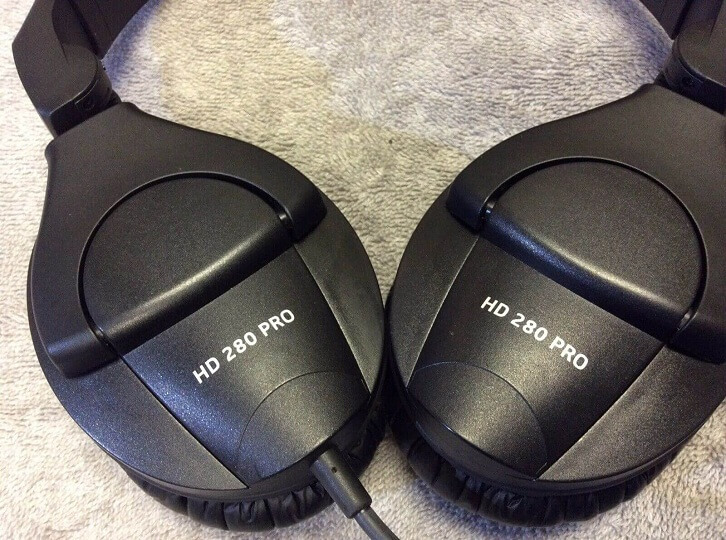
Sennheiser HD 280 Pro Closed Headphone
In the studio, open-back headphones are preferred for mixing because they have a flatter frequency response. A flat frequency response makes open-back headphones reproduce a more realistic presentation of the bass and other frequencies. However, they are not good for recording and tracking because they bleed and do not offer any isolation.

Samson SR850 Studio Headphone
Closed-back headphones, apart from being a solid choice as a recording headphone, they offer other benefits. Because most consumer headphones are closed, you can have a similar experience and tailor your mix for a wide audience. Even if it is an expensive closed-back headphone, the sound reproduction will be more similar to what most consumers hear with their headphones. Read more about our open-back vs. closed-back headphones guide.
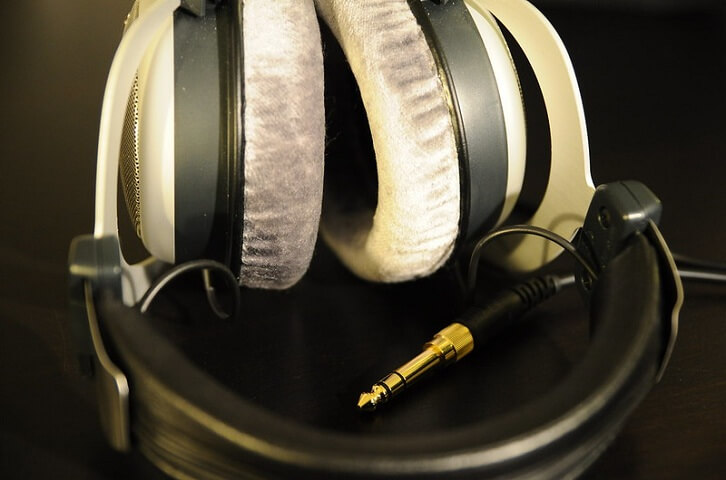
Beyerdynamic DT 880 semi open headphone
Headphones come in many designs but fall into three distinct types, in-ear, on-ear, and over-ear. In a studio setting, in-ear and over-ear headphones are the ones mostly used. Each has its pros and cons, but ultimately, your preferences should help you decide which to pick.
In-ear headphones are further divided into earbuds, IEMs, and CIEMs. Earbuds are rarely used in the studio. IEMs are inserted into the canal, unlike earbuds that sit on the outer ear. They offer better isolation and comfort when used. CIEMs, short for Custom In-Ear Monitors, are best for comfort and isolation. This is because they are custom-molded according to a user’s ear impressions. Read our article on the advantages and disadvantages of CIEMs.
Over-ear headphones can either be open, closed, or semi-open design. Over-ear headphones are most preferred in the studio because of their comfort and sound quality. Our list features nine over-ear headphones. This is because they are most likely what you will find or need in a studio. Read our in-depth guide on the three headphone designs.
In-ear monitors have always been associated with audiophiles or performers. As a studio engineer, IEMs offer several benefits, primarily if you use your laptop as a portable extension of your studio or if you want to take notes and adjust a few things while on transit.
With evolving technology, the sound of IEMs has also improved drastically. Most modern IEMs feature multiple drivers in each earpiece, with each driver specialized in reproducing a part of the audio spectrum. Just like studio monitors, this results in a very accurate reproduction of sound.
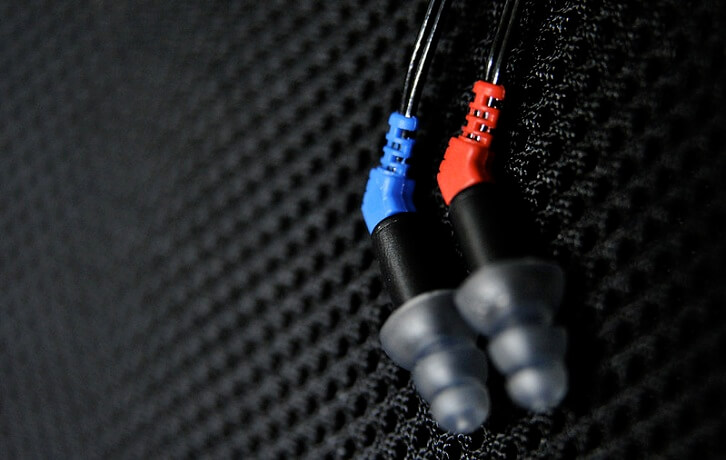
Etymotic Research ER4S studio IEMs
Apart from the sound, the comfort of in-ear monitors also makes them an excellent pick for long sessions. The majority are molded to sit better in the ear, but you can always opt custom IEMs which are explicitly molded according to your ear’s shape. This allows better isolation, and they are very comfortable that you’ll likely forget you had them on. If you need some recommendations for IEMs, we made a list here of the best IEMS under 1000 dollars.
A coiled headphone cable is more like the version you will find on the old telephone, while the straight cable has no coil to it. The Decision to choose a straight or coiled cable will largely depend on the type of cable management system you have in place or the one that suits your needs.
A coiled cable offers more flexibility than the straight cable by extending to allow further reach. The sonic difference between the coiled and straight is very minimal. So, choosing one should be based on preference. There are headphone manufacturers like Beyerdynamic with the DT 1770 PRO that will give you the choice of swapping between cables.
In a studio setting, different headphones are used for recording, mixing, mastering, or tracking.
Closed-back headphones are good for recording because they do not leak out the sound. Most podcasters (who wear headphones while podcasting) also prefers closed-back headphones.
Studio microphones usually are very sensitive and can pick up even the faint noise. OPen-back headphones leak a lot of sounds which could get picked up by the microphone. In the recording studio, closed-headphones are great because they offer better isolation.

Sony MDR 7506 at home studio
When mixing, it is important to select a pair of headphone that has a flat frequency response as possible. This allows your mixes to translate across different audio systems. In this case, an open-back headphone is your best choice. A good reference quality open-back headphone should help you identify problems in your track like hissing and buzzing noises so you can work on them. The headphone should also help you refine the track and improve the quality.
Apart from recording, mixing, and monitoring, you should also have a pair of regular earbuds or headphones. After you are done, you can use these to hear what your final mix will sound like to the majority of users.
The comfort of a studio headphone is one of the features you should factor in when choosing your pick. Mixing, recording, or mastering in the studio can take long hours. An uncomfortable headphone might cause ear fatigue and headaches when used for long sessions. If you are looking for a comfortable studio headphone, the Sennheiser HD 800S, AKG 702, and the Beyerdynamic headphones on this list are all great options you can choose.
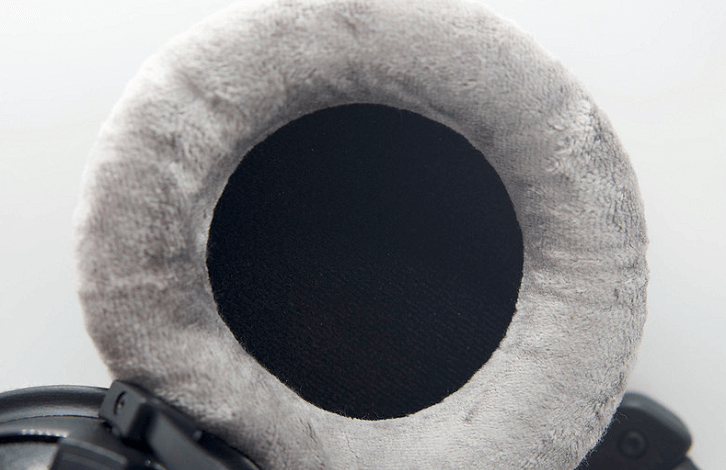
Beyerdynamic DT 770 earpads
Closed-back headphones offer better isolation than open-back headphones. This is why most consumers prefer this style of headphone. In the studio, isolation is critical when recording vocals. Leakage from a headphone can be caught up in the recording. This is why closed-back is preferred for recording.
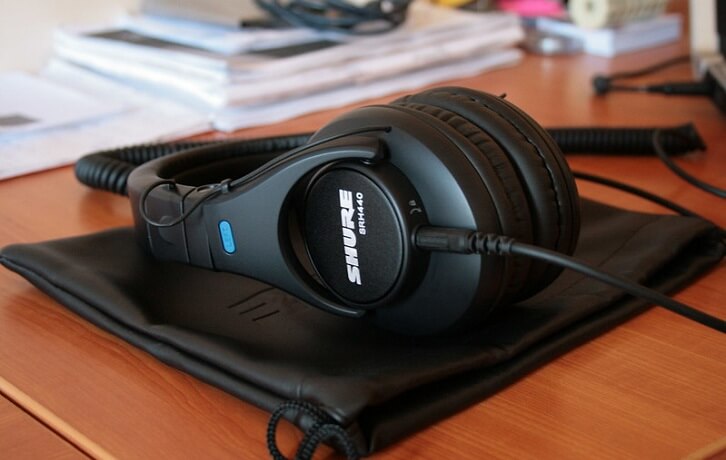
Shure SRH 440 Studio Headphone
For the same reason, a closed-back headphone is great for sound engineers who work in a noisy environment. If you want to minimize sound pollution and concentrate while working, closed-back headphones offer better isolation. Because they allow minimum sound in, they also leak out very minimal sound out. This makes it possible to listen to your music at a higher level without disturbing the people around you.
Back to Our Best Stdio Headphone Picks
Back to Our Comparison Table